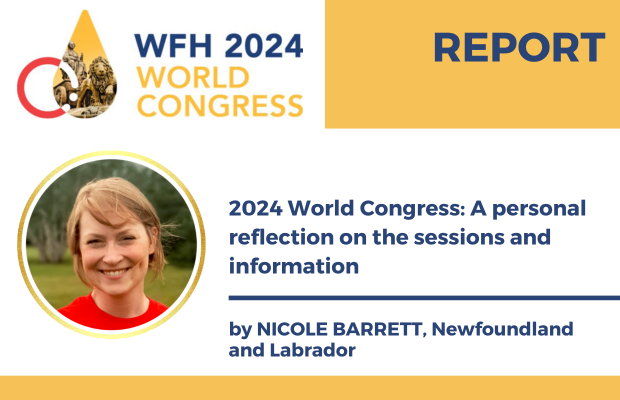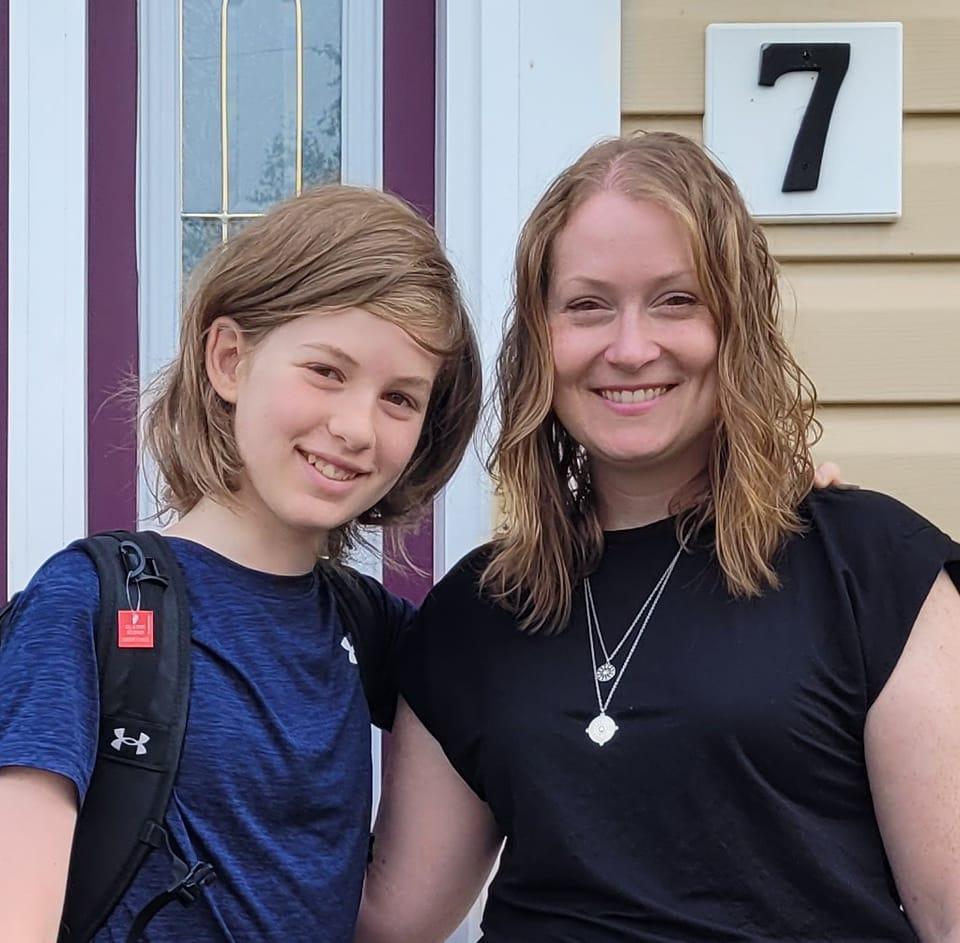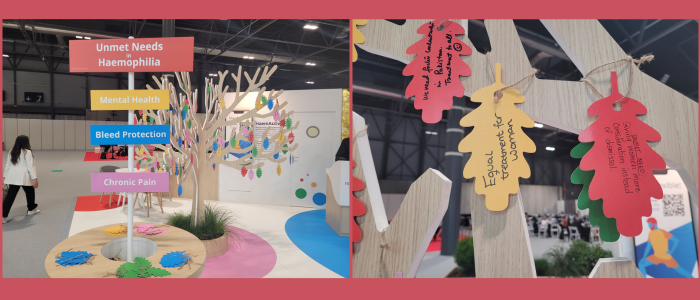A personal reflection on the WFH 2024 World Congress

As I began to write this article, I took a moment to reflect on my experience with bleeding disorders over the years. I have considered the gains that have been made, contemplated the current issues and treatments for people with bleeding disorders, and thought about the potential gains in the future. I thought about the problems that have been solved and wondered about the ongoing and upcoming challenges that require attention and resources.
I come from a family with a long history of bleeding disorders, primarily hemophilia A. Our family has tracked hemophilia back five generations, and as a result, our local bleeding disorder treatment centre (HTC) has a gene map that makes for a detailed family tree. Our family story has seen many changes in hemophilia understanding and treatment. I grew up knowing that my Nan had birthed a daughter, who lived only for a short time. My would-be aunt had symptoms that today sound similar to that of a brain bleed. Of course back then women could only be considered “carriers” so it was “not possible” to be related to hemophilia. She died of unknown causes.
Back in the 1980s, my dad, who had hemophilia, received treatments of blood transfusions knowing there was a chance of receiving tainted blood. In the same period, he was fighting cancer. Did his hemophilia affect his cancer treatment at that time, since managing these comorbidities in the 1980s was complicated and uncertain? My mom did not really understand genetics but believed that girls could only be carriers. She prayed for daughters and not sons, so the next generation would not have to suffer with the effects of a bleeding disorder. Her wish was granted and my sister and I were born, but with the hemophilia gene. These were the issues my family saw relating to hemophilia care.
While we share the same genetics, my sister has had few clotting issues. However, I have struggled with extra heavy and extended bleeding during periods, teeth extractions, and childbirth. Why me, but not her? I was always told that my issues were not actually a problem, the hemophilia gene was not the reason and women were “only carriers.”
When I had my son in 2011, despite having a clear warning in the birth plan, my doctor still needed to be told “no” by my husband as he tried to use forceps on my son. He was diagnosed with hemophilia before leaving the hospital. When I had my daughter in 2014, I hemorrhaged for no apparent reason, according to the medical team, and needed three units of blood. I was left feeling exhausted for weeks as my body recovered from the blood loss. The doctors were surprised but I was not. There was too much connected familial history to be a coincidence. I knew there was still much that we didn’t know related to my hemophilia.
My son, who has mild hemophilia, receives on-demand treatments. We have travelled an hour-and-a-half to the hospital to receive treatment more times than I could count, in all types of weather. I have sacrificed a full-time job to move closer to medical care, we have cut vacation times short, and allowed him to miss more school than I ever thought would be necessary. Now we do home self-infusions and consider ourselves very lucky to have a good relationship with our HTC.

Nicole with her son.
It is through this lens that I viewed the sessions and my experience at the WFH World Congress. Our world has made great strides in the care and research of bleeding disorders. The time for women (and anyone with XY chromosomes) with bleeding disorders has come, as sessions relating to XY-specific bleeding were offered in nearly every time slot. Thankfully the term “carrier” has become outdated. In many countries, it is no longer necessary to have a diagnosis before taking excessive bleeding seriously, as we recognize now that laboratory tests are not always effective, and we simply do not know it all. Now is the time for women’s unique bleeding issues to become more visible. These issues are being discussed, not as ideas, but as a series of facts worthy of research and treatment in their own right. We still have much to learn, but we are on the right path and gathering momentum.
The accessibility of prophylaxis, treatment advances such as emicizumab, medical problems that are solved, and the challenges that still exist were other hot topics this year at the Congress. Those who have access to the treatment are experiencing much lower rates of bleeding which has been in itself a major victory. The massive lifestyle change for those with severe hemophilia A has allowed a natural shift in focus and opportunities for research into other issues that affect those living with hemophilia and their families. This includes maintaining joint health, comorbidities as ageing happens, how to maintain health over time, growing issues of thrombosis, using new technologies effectively (such as health-monitoring smart-watches and mobile apps), and looking after the whole person, including their physical, but also their mental, social, and spiritual health.
Some people with bleeding disorders have undergone gene therapy with promising results. I am cautiously optimistic and look forward to more information on this in the future. It certainly is an interesting time in the inherited bleeding disorder world.
With these key advances in treatment and care for those with bleeding disorders, it is important to appreciate how far we’ve come. But it is also important to look at where we need to go. There are many rare bleeding disorders with treatments that have not had these significant changes, for example Factor V deficiency.

Many people around the world are experiencing the effects of living with a bleeding disorder but remain undiagnosed. Access to treatment continues to be a global issue, and while we Canadians have access to emicizumab and long-acting factor products, many people in the world are without treatments or continue to rely on fresh frozen plasma.

Dr. Pierce during his opening remarks.
In the opening statements for this year’s Congress, WFH VP Medical Glenn Pierce cautioned attendees that our work is not over. While we are celebrating our advances in care and making plans for improvement in the future, the World Health Organisation (WHO) and International Society on Thrombosis and Haemostasis (ISTH) struggle to differentiate between types of treatments (prophylaxis, episodic/on-demand) and establish effective minimum global standards of care. Bleeding disorder issues are complicated, multifaceted, and in need of people as advocates. Even when things are looking up, we need to ensure that future treatments, for all types of bleeding disorders, are effective and support the quality of life we want for future generations.
NOTE FROM THE CHS: Nicole is the 2024 recipient of the Dr. Ronald E. George Fellowship. This fellowship was initiated and funded in his memory by his widow Leni; they were both long-time volunteers with the CHS at all levels. This fellowship aims at allowing a parent with a child with hemophilia to attend the WFH World Congress in both 2024 and 2026.




